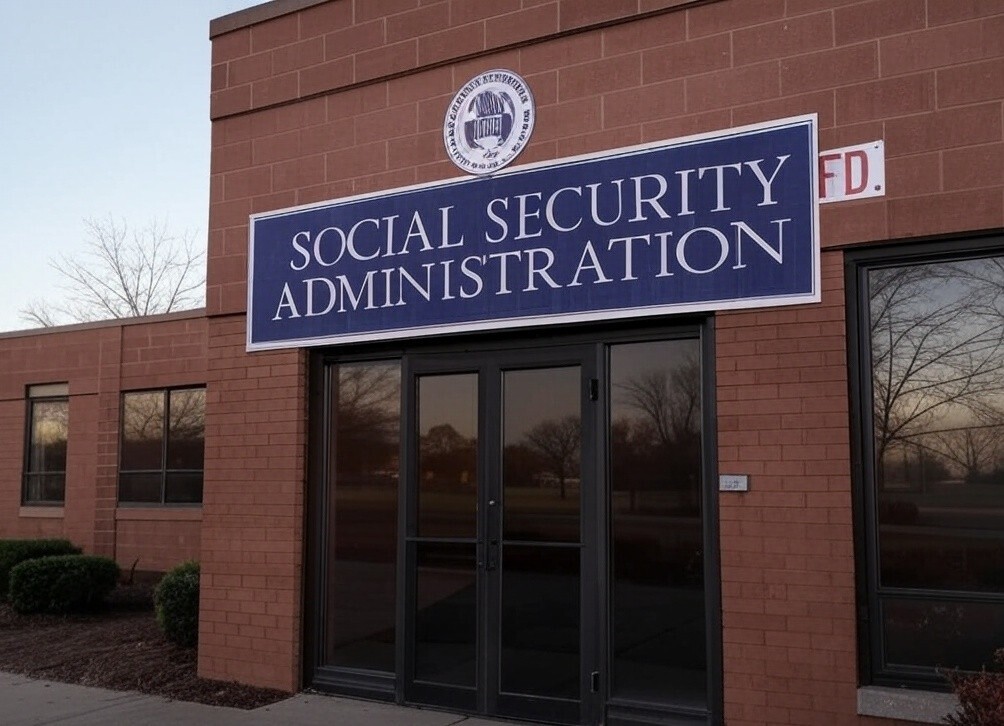Social Security Alerts, News & Updates
Social Security Shifts to In-Person Identity Checks This April

Breaking: Social Security Discovers Revolutionary Technology Called “Standing in Line”
Just when you thought applying for Social Security couldn’t get any more delightful, the SSA has outdone themselves. Starting April 14, lucky applicants who can’t use online accounts get to experience the joy of in-person identity verification. Because nothing says “21st century efficiency” like making elderly folks trek to understaffed offices.
Here’s the deal. If you’re applying for retirement, survivor, or family benefits and can’t navigate their online system (which, let’s be honest, crashes more than a teenager learning to drive), you’ll need to prove you exist in person. Revolutionary concept, really.
The Social Security Administration calls this a “security enhancement.” I call it Tuesday at the DMV, but with higher stakes and older participants.
The Great Backpedal of 2025
Credit where it’s due: the SSA actually listened to feedback. Sort of. Originally, they wanted everyone to jump through these hoops by March 31. After advocacy groups pointed out the obvious (that this might be slightly inconvenient for, say, disabled people), they graciously narrowed the scope.
Now only certain applicants get to enjoy this bureaucratic adventure. Specifically, those who can’t use the online verification system. You know, the exact people who probably struggle most with getting to a physical office.
Max Richtman from the National Committee to Preserve Social Security and Medicare summed it up nicely. People would need to:
- Call the perpetually busy phone lines (current wait time: somewhere between “forever” and “heat death of the universe”)
- Schedule an appointment at increasingly rare Social Security offices
- Physically travel to said office (hope you have a car and can still drive!)
- Stand in line with proper documentation (bring snacks)
What could possibly go wrong?
Perfect Timing: Budget Cuts Meet New Requirements
In a stroke of administrative genius, these new requirements arrive just as the SSA plans to slash $800 million from their budget. That’s right. Less money, fewer staff, more requirements. It’s like a masterclass in how not to run a public service.
The workforce reduction? A modest 12%. Because who needs employees when you’re asking more people to visit in person? The math is impeccable.
Meanwhile, about 47 SSA locations are closing. But don’t panic! The agency clarifies that most were just “small hearing rooms” with no assigned staff. Ah yes, the old “it wasn’t really an office anyway” defense. Classic.
Who Gets to Play This Fun New Game?
Let’s be clear about who’s affected. It’s not tech-savvy millennials who can verify their identity while ordering avocado toast on their phones. It’s:
Elderly folks who think “the cloud” is a weather phenomenon. People with disabilities who already face mobility challenges. Rural residents whose nearest Social Security office might be counties away. Anyone without reliable internet or computer skills.
You know, the exact populations Social Security was designed to protect. But sure, let’s make their lives harder in the name of “security.”
The Real Impact on Real People
Behind the bureaucratic speak, real people face real consequences. Imagine being 75, recently widowed, trying to apply for survivor benefits. Now add a 50-mile drive to the nearest office, assuming you can still drive. Or afford gas. Or find someone to take you.
Consider someone applying for Social Security disability benefits. They’re already dealing with health challenges. Now they need to physically appear at an office that might not even be wheelchair accessible. Progress!
The cruel irony? Many of these applicants paid into Social Security their entire working lives. They followed the rules, contributed their taxes, and now face obstacle courses to access their own benefits.
What This Really Means
Let’s drop the sarcasm for a moment. This policy change represents a fundamental disconnect between government efficiency goals and human reality. Yes, preventing fraud matters. But so does ensuring legitimate beneficiaries can actually access their benefits.
The SSA claims these measures will “strengthen security.” Against what, exactly? The notorious grandmother fraud ring? The wheelchair-bound identity theft syndicate? Please.
What this really does is create barriers for vulnerable populations already struggling to navigate complex systems. It’s security theater that punishes the people who need help most.
Your Survival Guide for April 14 and Beyond
If you’re affected by these changes, here’s what you actually need to know:
Start early. Don’t wait until you desperately need benefits. The process will take longer than ever.
Gather documents now. Birth certificate, ID, Social Security card, marriage certificate, death certificate (if applying for survivor benefits). Make copies. Then make copies of the copies.
Find your nearest office. Check if it’s still open. Have a backup plan because it might close by the time you need it.
Bring patience. And snacks. And maybe a good book. You’ll be waiting.
Consider getting help. Local senior centers, disability advocates, or family members might assist with transportation and navigation.
The Bottom Line
Come April 14, applying for Social Security benefits gets harder for those who need them most. It’s dressed up as a security measure, but it’s really about making an understaffed, underfunded agency appear to be doing something.
The people who designed this system probably submitted their plans online from comfortable offices. The people affected by it will be standing in line at 8 AM, hoping their documentation is sufficient and their Social Security office hasn’t closed.
But hey, at least we’re preventing all that rampant Social Security fraud that definitely exists and isn’t just a convenient excuse for making life harder for elderly and disabled Americans. Mission accomplished, folks. Mission accomplished.
Remember: Your Social Security payments aren’t a handout. They’re money you earned and contributed over decades. Having to prove you exist to access them isn’t security. It’s absurdity. But it’s the absurdity we’re stuck with, so plan accordingly.